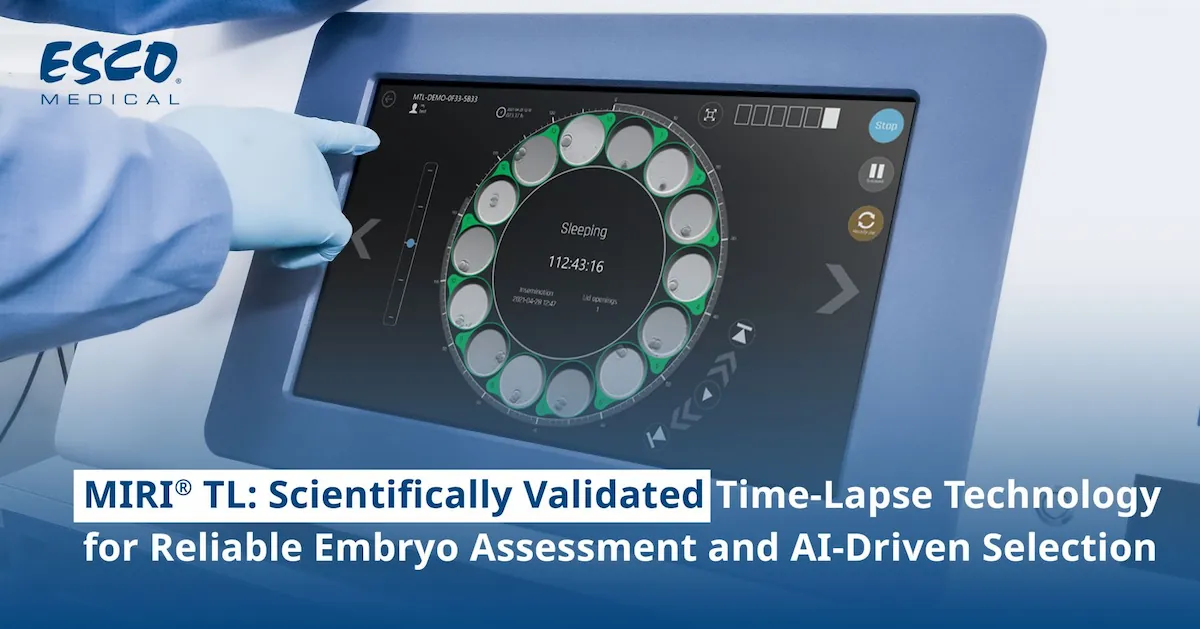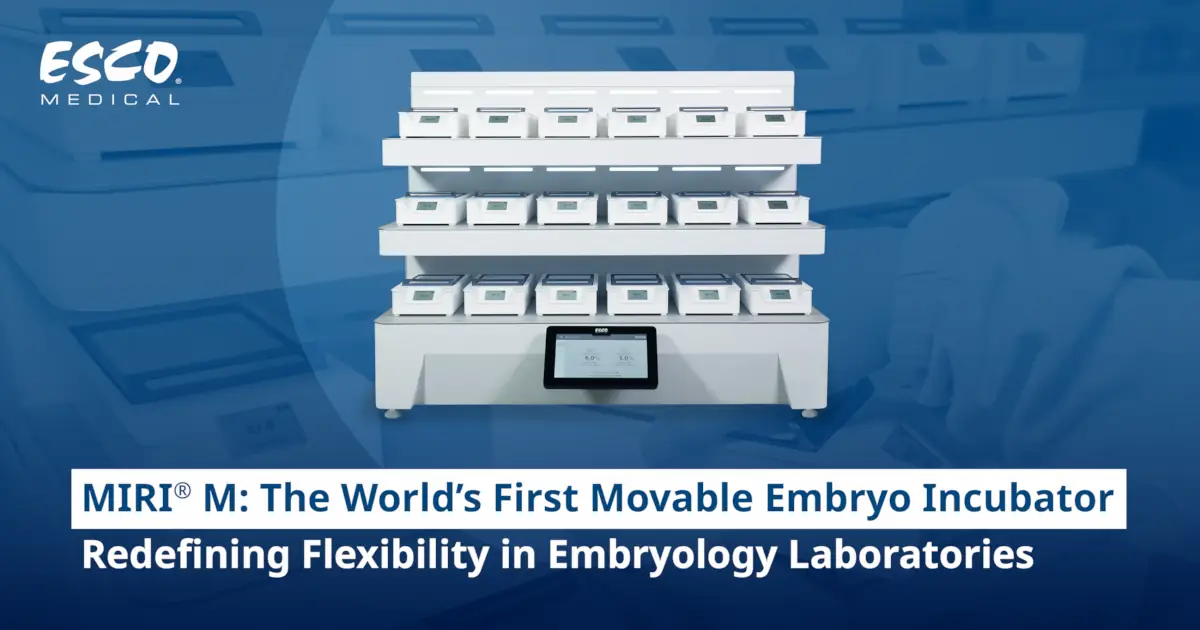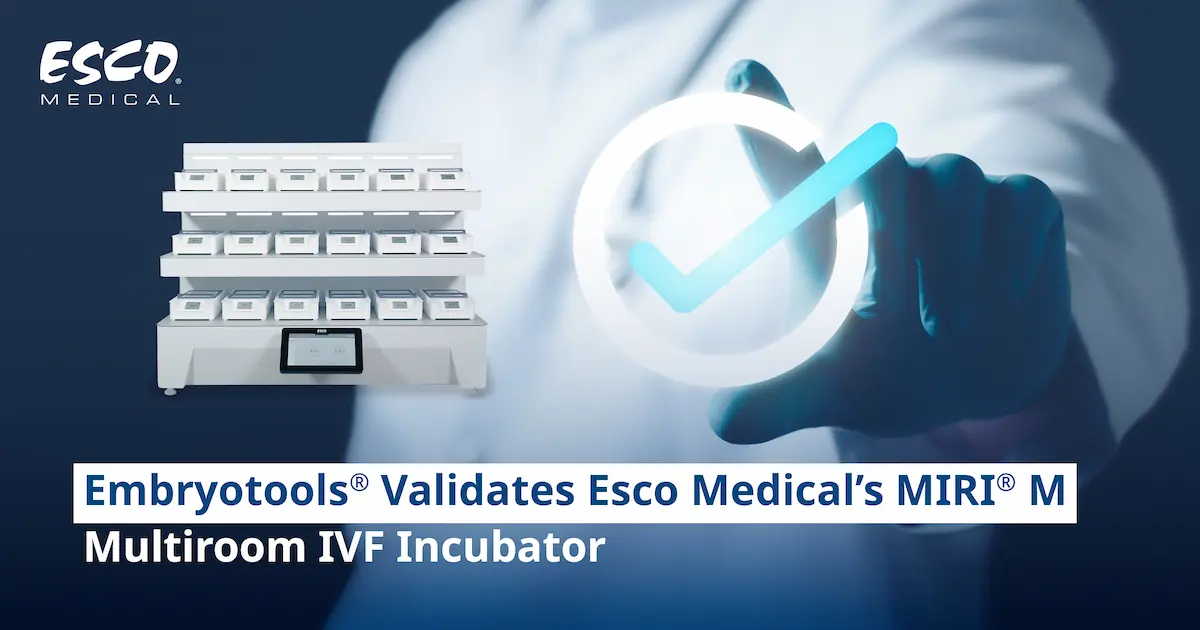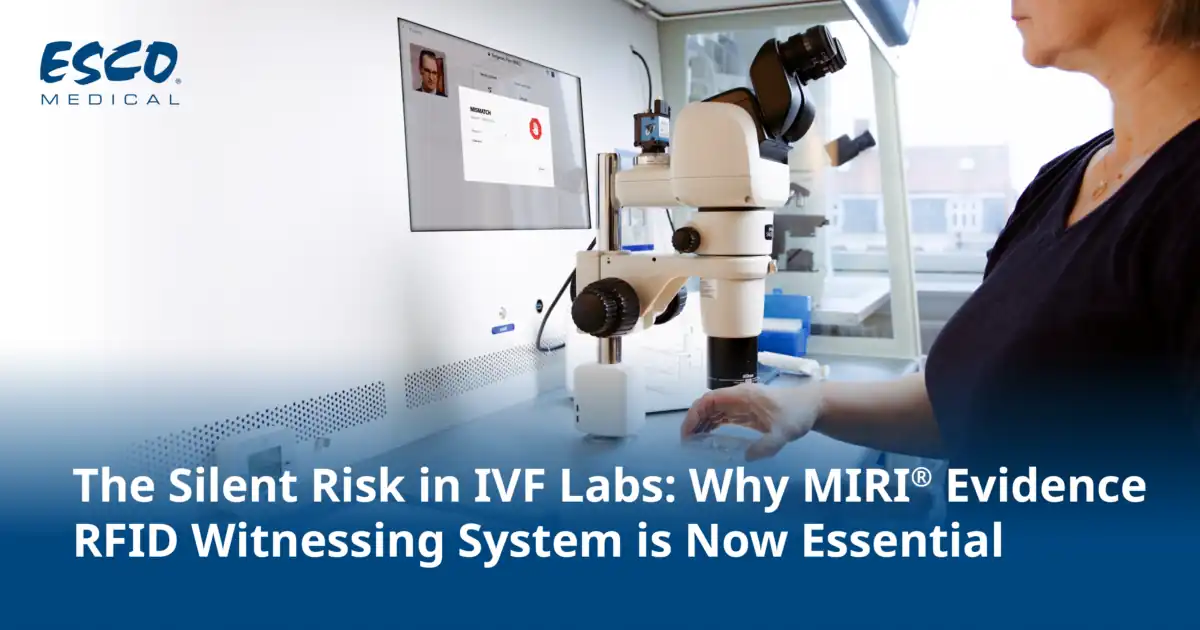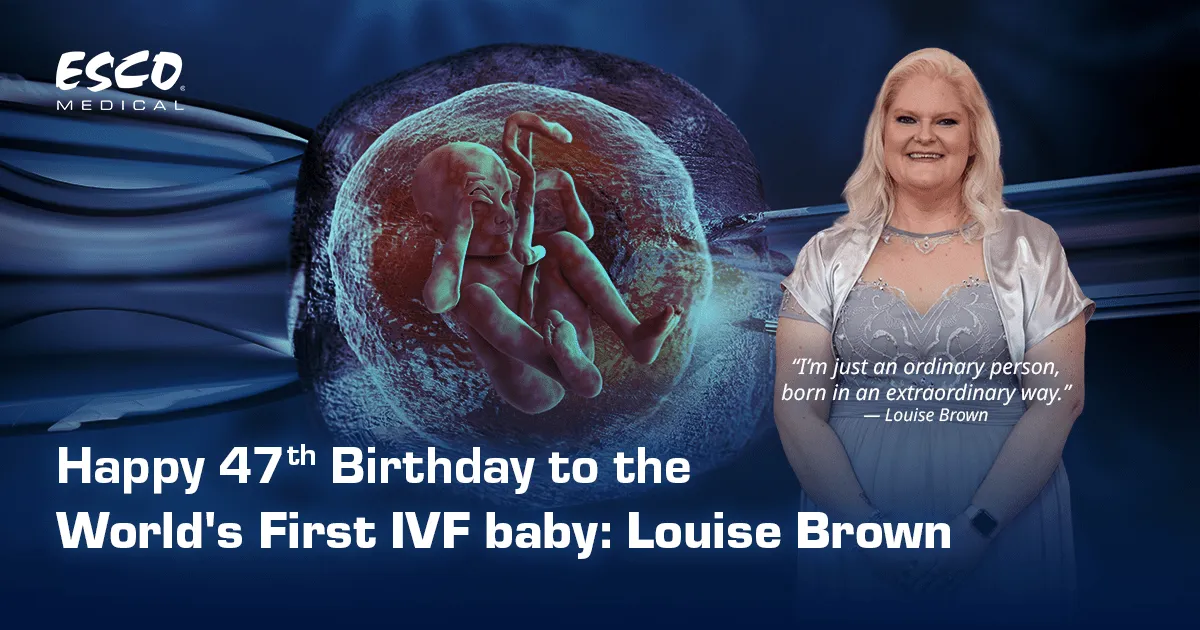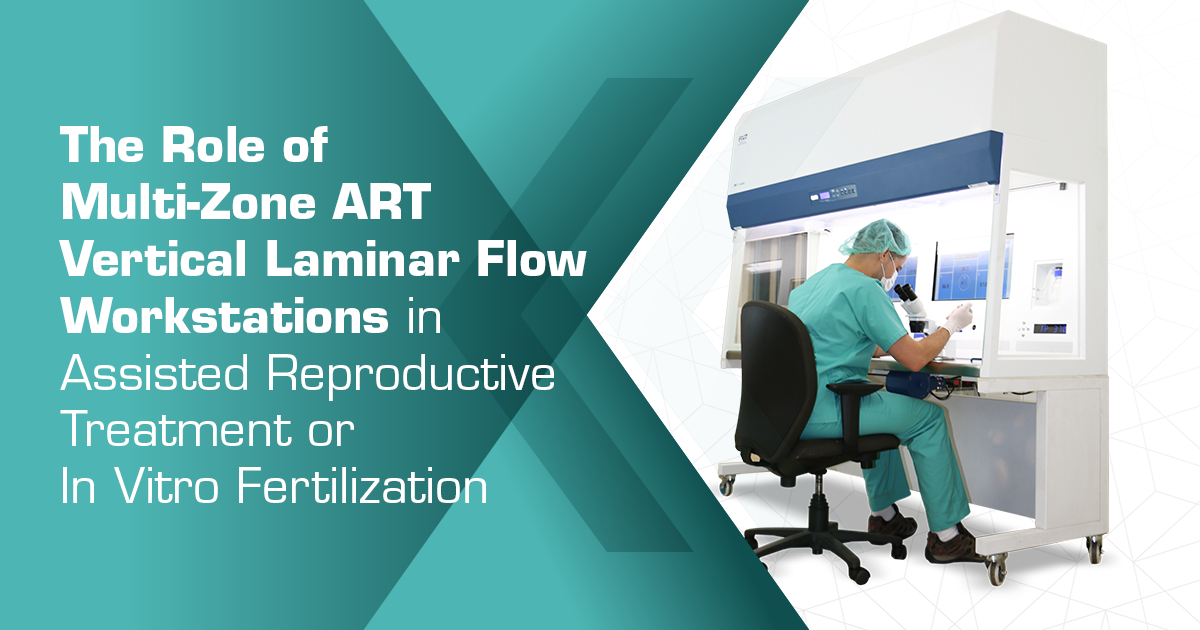
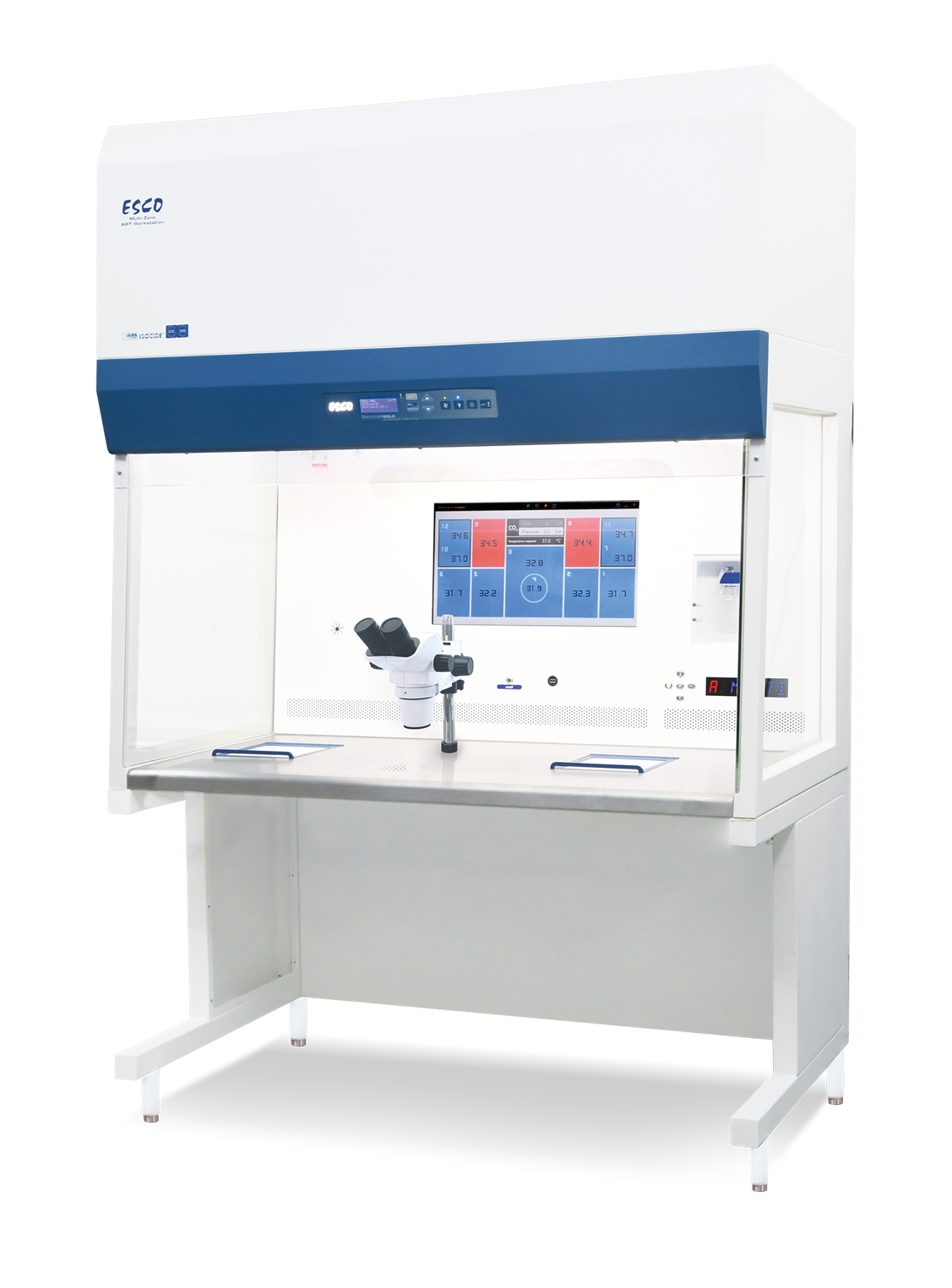
What are Multi-Zone ART/IVF Vertical Laminar Flow Workstations?
A laminar flow cabinet maintains a controlled work surface for applications that require a sterile work environment, while a continual filtered airflow across the surface prevents contaminants from entering.
Multi-Zone ART (Assisted Reproductive Technology) or IVF (In Vitro Fertilization) vertical laminar flow workstations have multiple heating zones that allow for perfect temperature control throughout the work surface. Each of the separate heating zones has its own heating components and sensors to prevent cross-heating. The workstation also features a dedicated and continuous power source for temperature control and recuperation. You can choose to operate from 4 temperature modes, and units are available in different sizes and configurations as well.
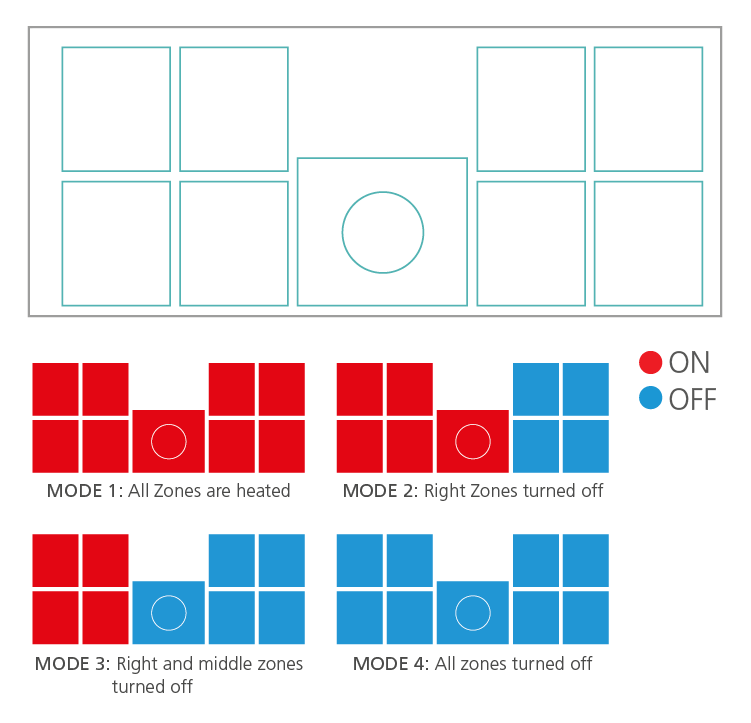
The Multi-Zone ART/IVF workstation also has an integration for microscope that accommodates the features of the most popular stereo and inverted microscopes. A pre-mixed gas humidification system is built-in, which you can control digitally. All work area data, including zone temperature performance, gas pressure, and flow rate, are displayed in real time on a fully functional Windows PC with a touch screen. The small outlet port on the table top, when used with the included plastic cover, helps keep samples under control.
There are two types of laminar flow cabinets. The horizontal laminar flow cabinet creates a sterile work zone by circulating purified air in a horizontal, unidirectional stream that exits the main work chamber and goes across the cabinet's open front. On the other hand, perforations in the back wall of the work zone on most vertical laminar flow benches are designed to prevent air turbulence and the likelihood of dead air corners in the work zone. Purified air moves across the working zone of the cabinet in a vertical, unidirectional stream and departs the main work chamber across the entire open front of the cabinet, providing sample protection.
Esco's laminar flow cabinet is the result of solid engineering and deliberate ergonomics. It provides users with long-term stability and comfort. It's ideal for applications that need to be kept sterile. Electronics assembly, plant tissue culture, culture medium preparation, and other non-hazardous applications are examples of these applications.
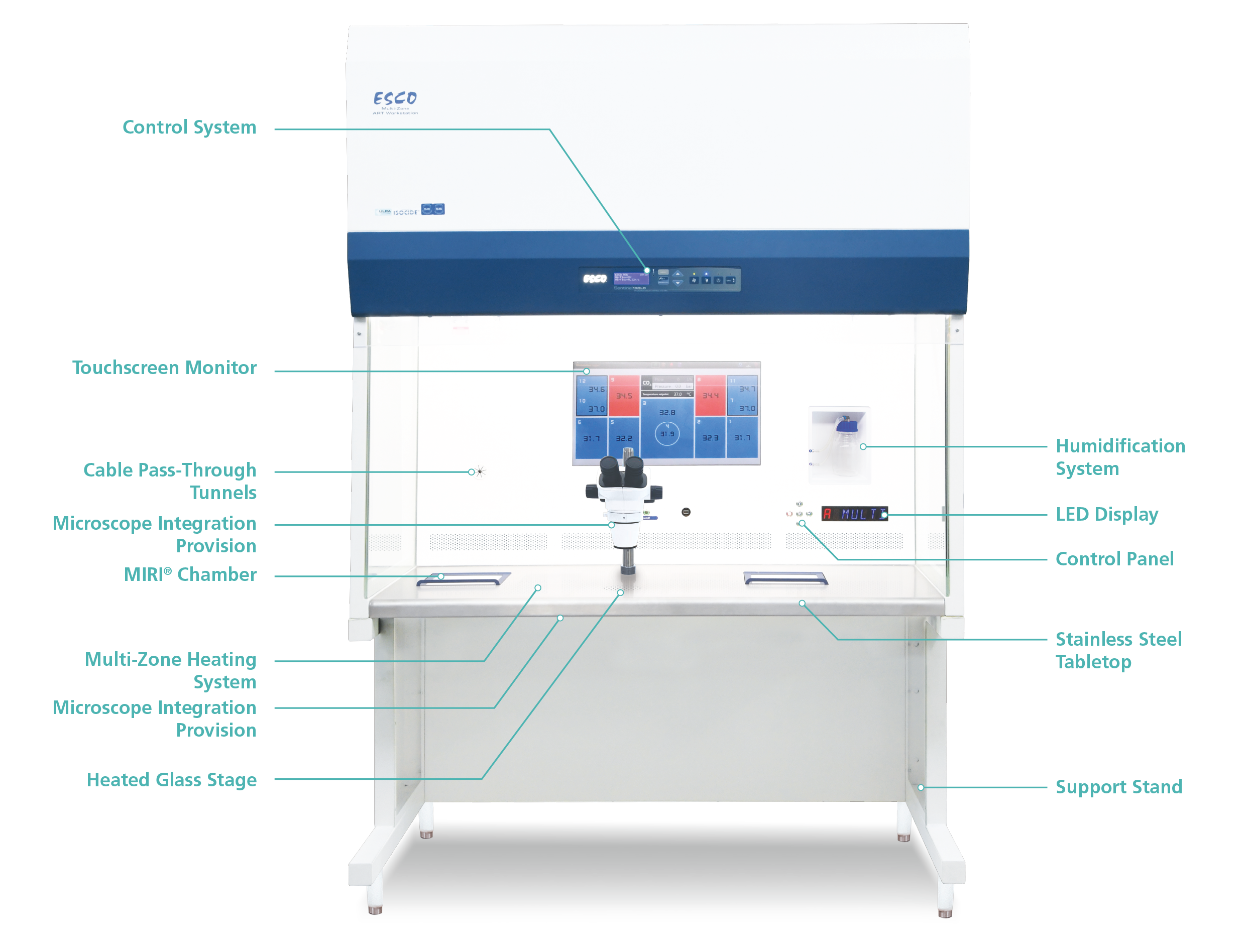
How does Vertical Laminar Flow Workstations work in Assisted Reproductive Treatment or IVF?
Esco Medical's Vertical Laminar Flow Workstation can have an optional integrated MIRI chambers for Assisted Reproductive Treatment. Installing a built-in UV lamp for work zone decontamination with a polycarbonate front cover for UV shielding is another option open to users.
Due to the particular airflow pattern that assures environmental safety, vertical laminar flow cabinets can be utilized as assisted reproductive technology workstations.
In this operation, ART/IVF laminar flow workstations play a significant role for environment safety.
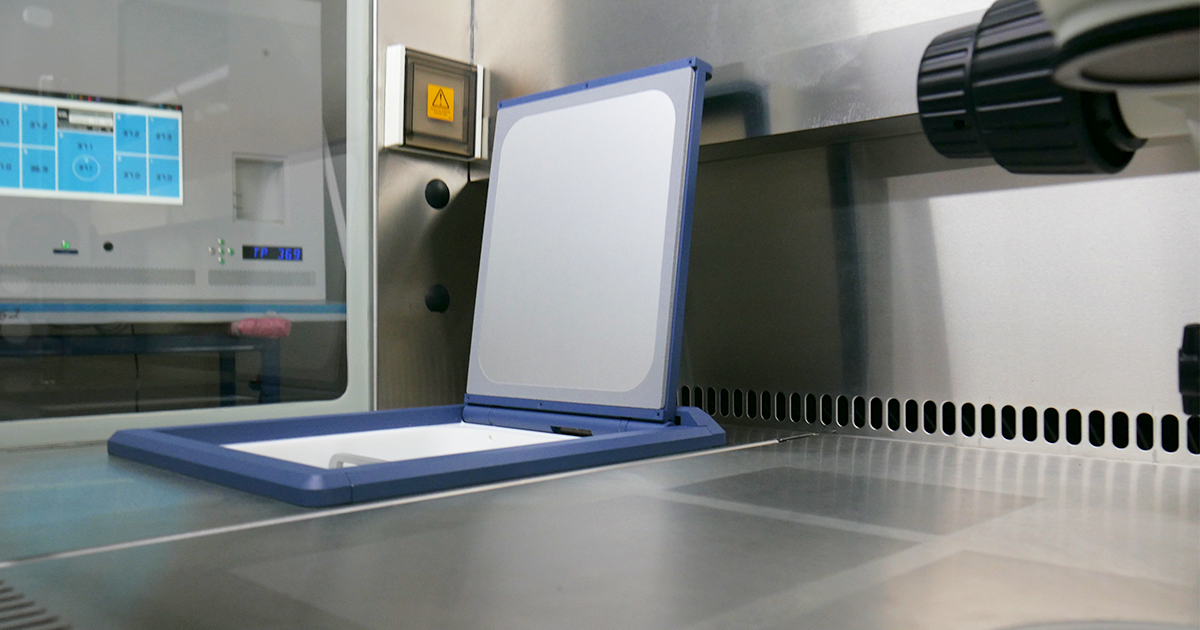
What is ART and IVF?
Infertility can be treated using Assisted Reproductive Technology (ART) and fertility therapies. ART stands for assisted reproductive technology, which refers to fertility treatments and procedures that can aid with infertility. ART approaches entail manipulating eggs, sperm, or embryos in order to improve the chances of a successful pregnancy.
The most popular, well-known, and efficient type of ART is in vitro fertilization (IVF). IVF helps sperm fertilize an egg and the fertilized egg implant in your uterus by combining medications and surgical procedures.
The first step in the procedure is to take medicine to make several of your eggs mature and ready for fertilization. To facilitate sperm fertilization of the eggs, the eggs are removed from your body and combined with sperm in a lab. The fertilized eggs (embryos) are then put directly into your uterus. Pregnancy happens if any of the embryos implant in the lining of your uterus.
IVF consists of various processes that take several months to complete. It can work the first time, but many individuals require more than one round of IVF to become pregnant. If you're suffering reproductive issues, IVF increases your chances of getting pregnant, but it's not a guarantee. IVF may not work for everyone because everyone's body is different.
When persons are unable to conceive after a period of regular sexual intercourse without the use of birth control, they are said to be infertile. According to research, around 10% of American women aged 15 to 44 have problems getting or staying pregnant. Additionally, 8–12 percent of couples worldwide have fertility issues, with 40–50 percent of cases attributed to male-related causes.
According to the CDC, ART is used in the birth of around 1.9 percent of all newborns in the United States. While the technology has the potential to be effective, it can also be costly. Infertility coverage varies by state for people who want to have a child with ART in the United States.
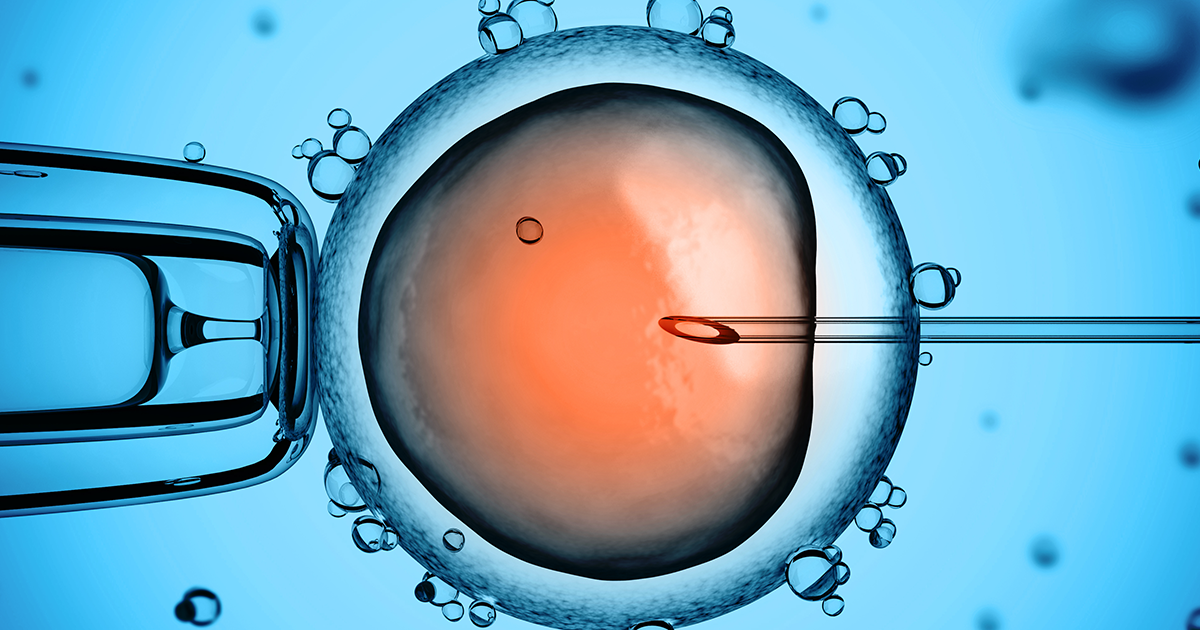
Pros and Cons of IVF or ART
Because IVF extracts the eggs from the ovaries and implants the embryo straight into the uterus, the fallopian tubes are not required. A past pelvic infection, such as appendicitis or chlamydia, might cause a woman's fallopian tubes to become blocked. When it is found that the fallopian tubes are obstructed, IVF is the sole option for conceiving.
If the quality or quantity of the man's sperm is a concern, IVF is a good alternative since it uses ICSI (Intracytoplasmic Sperm Injection into the Egg) to inject the sperm directly into the egg, allowing for successful fertilization.
Some couples may be at a higher risk of having a baby with a birth defect. IVF allows embryos to be evaluated before being implanted in the uterus. This lowers the chances of the baby acquiring a disorder for which one or both partners carry a gene.
However, it’s important to take note that ART operations may cause multiple pregnancies due to the usual amount of embryos implanted in the parent. For others, this may not be a disadvantage, but the goal of fertility treatment is to give you one baby at a time. Even if only one embryo is implanted in the uterus, it is conceivable for an embryo to split and produce two offspring.
During the egg collecting operation, not every follicle will have an egg taken from it. Although a large percent of follicles are expected to produce an egg, fewer eggs are sometimes recovered. Occasionally, no eggs are even collected.
IVF therapy can be a stressful experience. It's crucial to prepare physically, mentally, and emotionally before, during, and after the process. Reaching out to a psychologist can definitely make a difference as well.

Conclusion
ART/IVF Vertical Laminar Flow Workstations are commonly used for ART procedures. Many types of ART are available to treat infertility. The success rates of ART vary according to the type of ART people choose, and factors such as the individual’s age and health.
In an era of continuously developing technology, ART/IVF Vertical Laminar Flow Workstations play a significant role in the medical and biotechnology industry.
